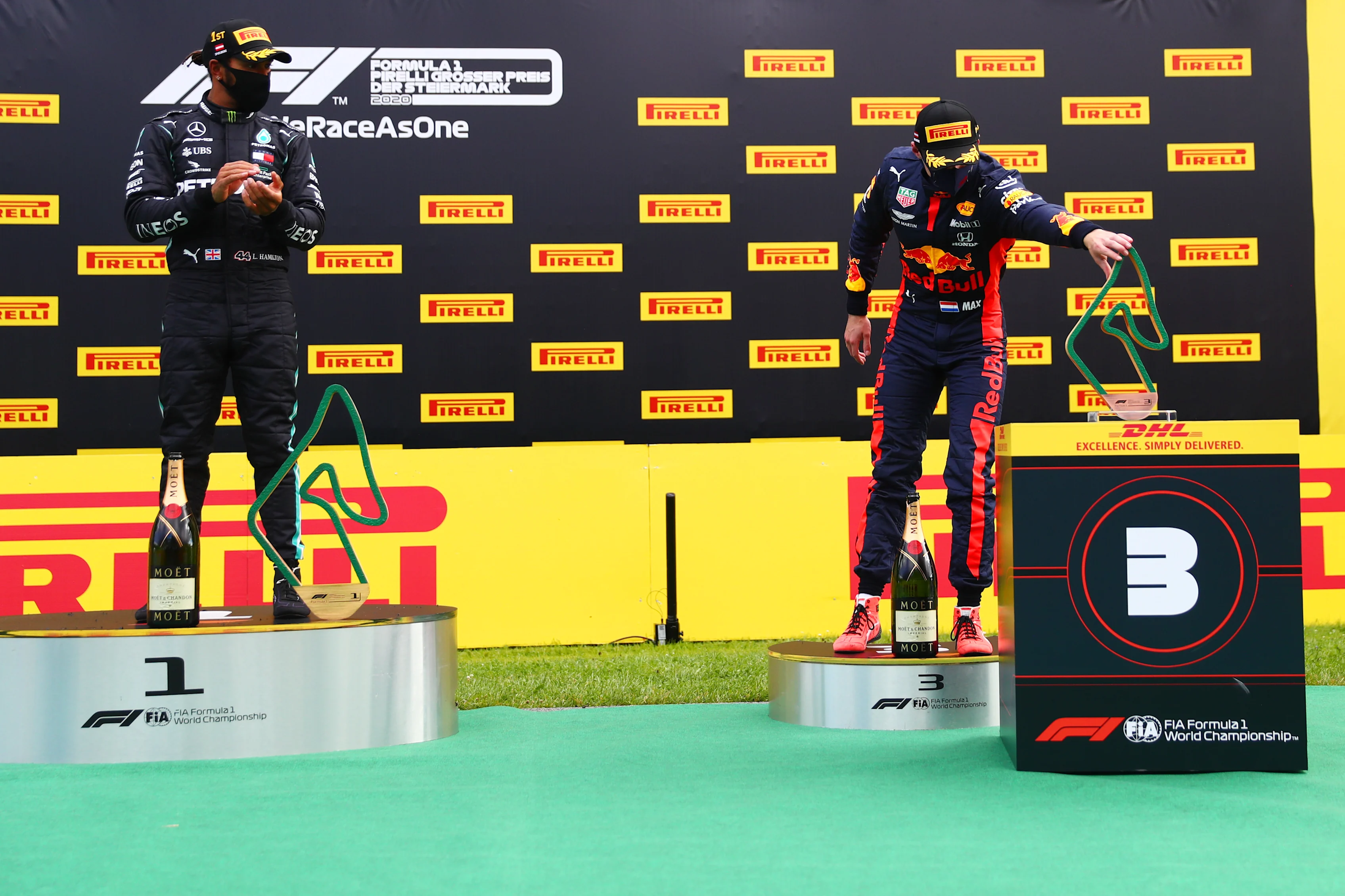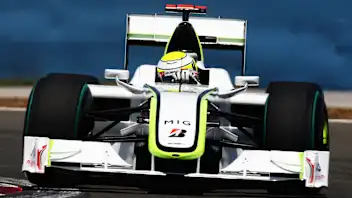Lewis Hamilton’s Styrian Grand Prix victory was based around his resounding wet weather pole position and his dominant pace advantage on race day. It was one of those rare victories that didn’t really need the pre-race strategy to be adjusted for the actual circumstances of the race.
He pitted a little earlier than planned because he was about to begin lapping traffic which would have delayed him and allowed the vaguely in touch Max Verstappen behind to reduce the gap. But such was his margin, that was a luxury comfortably afforded.
This was purely about a pace advantage, Hamilton acknowledging that he was taking only as much from his tyres as was necessary. It could have been a more dominant victory even than the half-minute winning margin over Verstappen’s third-place Red Bull suggested.
Furthermore, Mercedes used their greater pace to allow Valtteri Bottas to apply undercut pressure on the Red Bull, forcing it to stop earlier than ideal, with Bottas then running 10 laps longer so as to have a big tyre advantage over the Red Bull in the second stint. He would use this grip advantage to pass the by-then struggling Verstappen, further handicapped by front wing and barge board damage inflicted over the Turn 7 kerbing.
How was this Mercedes advantage derived? It was partly circuit-specific. The Red Bull Ring is very demanding of the ERS system over its short lap. There are three flat-out sections and not many corners in which to capture braking energy. So it is one of the few tracks on the calendar (along with Baku and Spa) where the ERS cannot deploy on demand for the full lap. At some point it will begin clipping its deployment and the car will be denied the extra 160bhp boost.
READ MORE: Red Bull 'just too slow' to stop Mercedes in Austria, says Verstappen
But the Honda system is less efficient than that of Mercedes. So the Merc will keep accelerating even as the Red Bull hits that brick wall as the power is clipped. As they crossed the start/finish line, the Merc was hitting 180mph, the Red Bull not far behind at 178mph.
But between there and the speed trap further up the road, the Honda’s deployment would cut – and the Merc passed the timing beam there at 198mph, the Red Bull just 191. This ERS difference will not be a factor at most of the other circuits we visit.
But that one issue had further ramifications here. The high-rake Red Bull, which derives a particularly high proportion of its downforce from the underbody, habitually runs less wing than the low-rake Mercedes. That was so again here, but by a greater degree than usual as Red Bull tried to mitigate against the effects of that ERS shortfall.

Running less downforce, the Red Bull’s tyre degradation was greater – and this (together with Verstappen’s aero damage) played its part in how easily Bottas was able to catch him even after being delayed by backmarkers.
Mercedes’ engine advantage here was such that it could carry more wing and still be faster on the straights. The only place the Red Bull was slightly faster was through the low-speed Turns 3 and 4, though it was only slightly slower through the fast sweeps of the middle sector.
Styria Facts & Stats: Hamilton now just 6 wins shy of Schumacher record
Red Bull might have been able to compete with the Merc had the weather been as hot as during Friday practice when the track temperature, at 53 degrees, was around 20 degrees C higher than it would be on race day. Then, the Merc was saturating the soft compound tyre and overheating it. Verstappen lapped quicker than either of the Mercs in Friday’s second practice session and was having no such problems.
But the weather gods, having had their fun with the rain of qualifying, didn’t do anything too extreme on Sunday, allowing the inherent advantage of the Mercedes, amplified by the circuit traits, to play out in the natural order.
Next Up
Related Articles
 Logan Sargeant confirmed as Ford WEC Hypercar driver
Logan Sargeant confirmed as Ford WEC Hypercar driver 14 drivers from different eras who raced together in F1
14 drivers from different eras who raced together in F1 ExclusiveRoss Brawn reveals his favourite car designs
ExclusiveRoss Brawn reveals his favourite car designs F1 drivers who bounced back after dropping off the grid
F1 drivers who bounced back after dropping off the grid.webp) The 10 youngest drivers to race in F1 – and how they fared
The 10 youngest drivers to race in F1 – and how they fared.webp) 6 of the most memorable car launches in recent F1 history
6 of the most memorable car launches in recent F1 history

